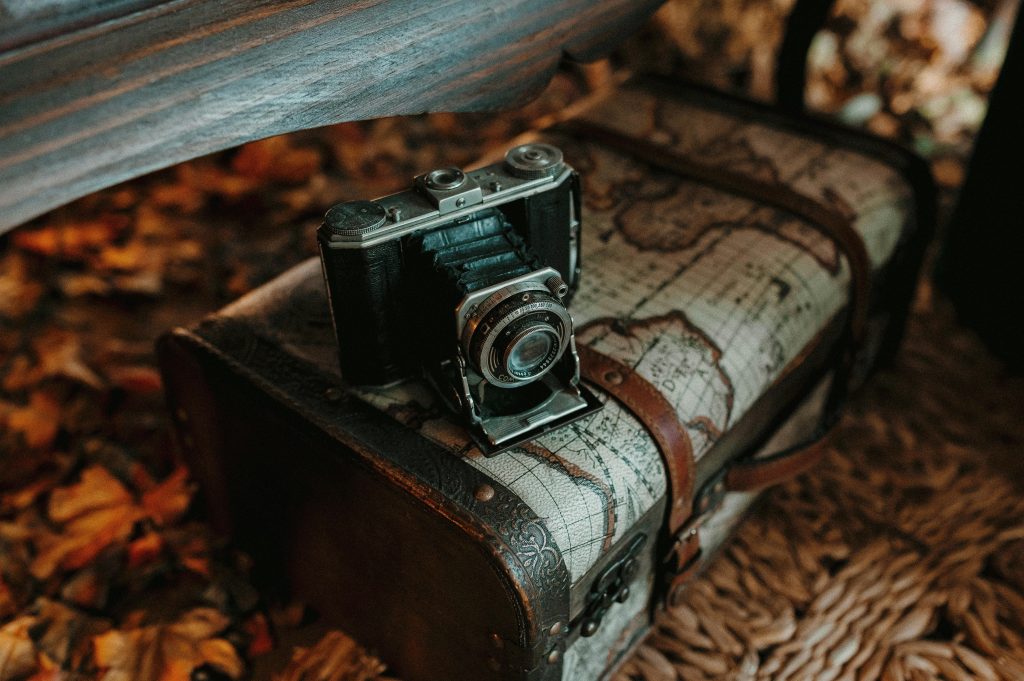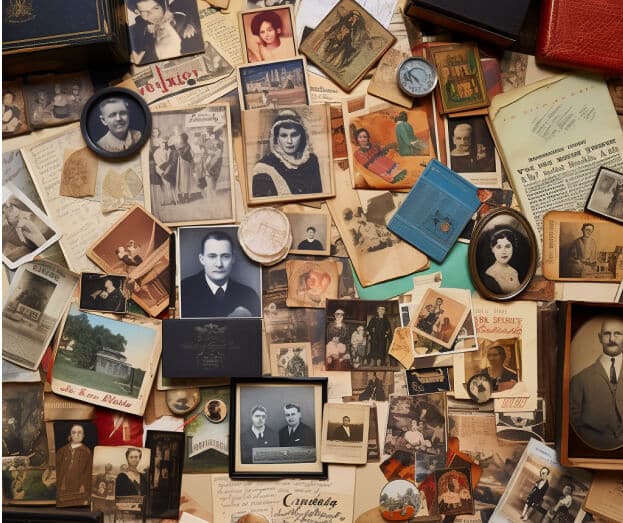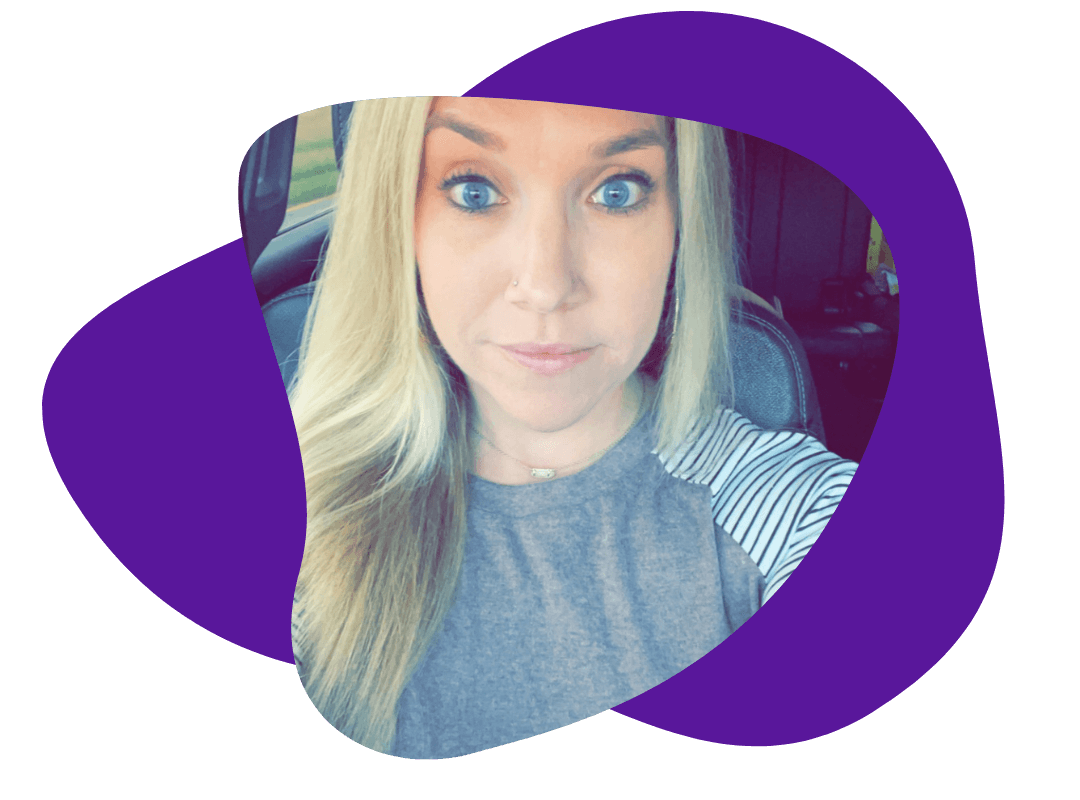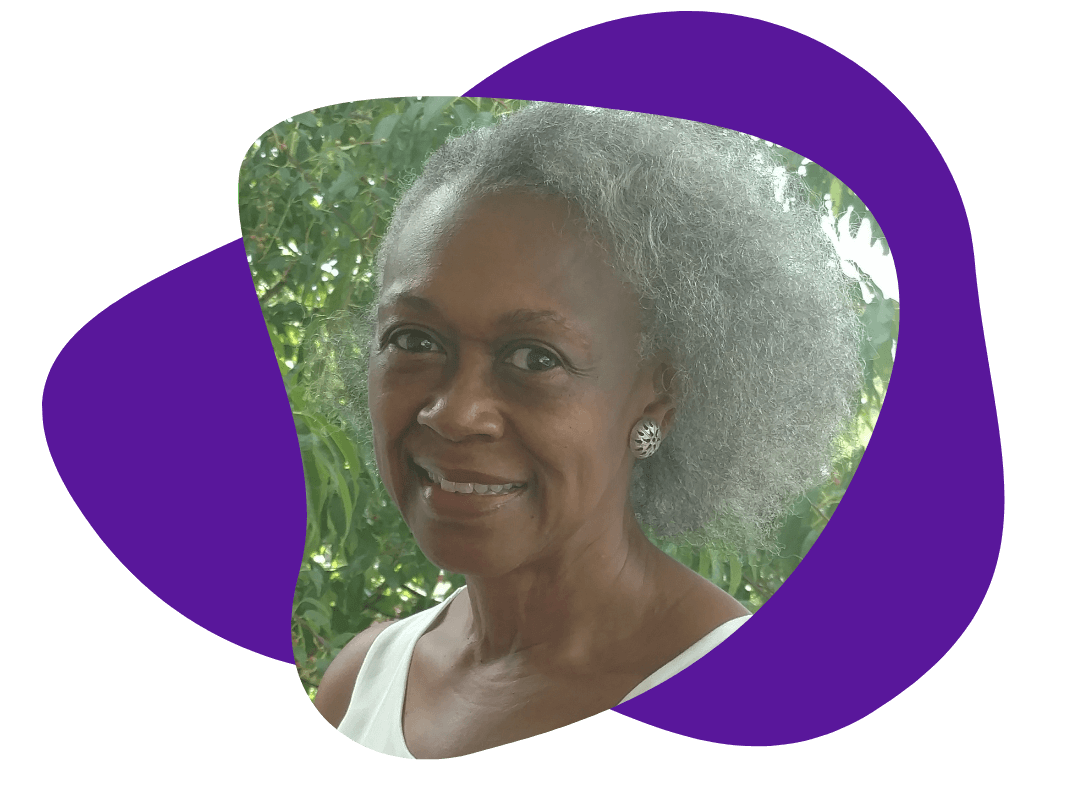More Than Just Pictures: How a Family History Book Brings Your Past to Life
March 27, 2025
I have a trunk at the foot of my bed—one of those old steamer trunks that has lived a more exciting life than I have. My grandfather took it with him across the United States, Europe, and Asia in the 1920s and ’30s. My dad carted it around on multiple cross-country drives throughout the 1960s and ’70s. My sister used it for summer camp in western Massachusetts in the 1980s and ’90s. And I have brought it with me on every move—from Maine to Virginia to Pennsylvania to Ohio and, now, to North Carolina.

It’s a heck of a trunk, filled with mementos, photos, old letters, and that musty smell you only get from family heirlooms that no one pays much attention to anymore. It’s way cooler than I am.
But you know what isn’t cool? The mess—the absolute chaos—of the pictures scattered inside it. There’s no rhyme or reason.
My grandparents’ photos are mixed in with my high school graduation pictures and baby pictures of my own kids. Trying to tell a coherent story from this jumble is an exercise in frustration.
Sure, I could organize them. But even then, those pictures would only tell half the story. A photo of my dad running on his high school track team doesn’t convey what it felt like for him to wake up early every morning and train. A picture of my husband’s grandmother holding my baby doesn’t capture how much it meant to me that she met all four of my children before she passed away.
Pictures may tell a thousand words, but when it comes to your family’s history, a thousand aren’t enough.
You Need a Family History Book
Have you ever heard of a family history book?
According to FamilySearch.com, a family history book is “a record of a family and of the lives of family members…a great blessing to you and to your posterity.” It can take many forms: a written history, a collection of family traditions or recipes, a record of familial genetic traits, or a combination of all the above.

Barbara Adams, a writer with The Writers For Hire, describes a family history book as something that “traces [a] family’s origins and, like a family tree, its lineage…includ[ing] biographical information about ancestors and the historical and social context of their lives.”
She adds that family history books “paint a portrait of a connected group and how the experiences of one (or many) members influenced the present.”
A portrait of a connected group—what a beautiful image, and what a meaningful gift to offer the people you love most.
But Aren’t Pictures Enough?
Yes, pictures tell a story—or at least part of a story. But as Adams points out, recorded family trees and photo albums, while valuable, are static. “Even with great captions, the photo album can’t connect the dots,” she says. A family history book, on the other hand, is dynamic. It offers a deeper dive into the personalities and circumstances of your family members.

Carmen Nigro, writing for the New York Public Library, puts it this way: “Family trees are abstract. Stories add depth.” A family history allows your ancestors to “become more than a birth and a death date.”
I’m not dismissing pictures—not at all. They’re an important piece of the puzzle. But they don’t allow for a complete story to be told.
Take Adams’ favorite family history project. She was working with a client whose original goal was to write a book about the lessons he had learned as a businessman. Though his stories were interesting, he realized his project felt too self-serving. After learning how much his early life had shaped his career, Adams suggested he write a family history instead.
With the help of The Writers For Hire’s certified genealogist, they traced his family back to the 1100s. He discovered that nearly every generation included risk-takers—just like him! “He could see himself in the people who came before him,” Adams says.
Even if he had photos of all those ancestors (no small feat, considering the timeline!), he wouldn’t have gained the same insights into their personalities and struggles.
Imagine what you could learn if you opened those doors too.
Where Do You Start?
FamilySearch.com offers great tips to get you started. First, write down what you already know. This helps you identify gaps in your knowledge.
Next, decide what form your history will take. Will you focus on one ancestor or an entire branch of the family? Will you highlight a particular theme—like marriage, education, or military service—across generations? Will you organize it chronologically or thematically?

Once you have a plan, start interviewing! Talk to living relatives, old family friends, or neighbors—anyone who might have insights into your family’s past.
While gathering stories, research the historical and social context of the times and places your ancestors lived. As FamilySearch.com notes, these factors “will have had a direct effect on your family.”
You might also find it helpful to look up outdated medical terms—these can clarify confusing death certificates or family medical histories.
Now You Know (And Knowing Is Half the Battle!)
In researching this blog post, I found myself wanting to write my own family’s history. As my parents grow older, as my siblings and I spread out across the country, as new family members are born, I realize how valuable it would be to document where we’ve been.
Better than the mess in that trunk, anyway.
I bet it could do the same for your family, too.































